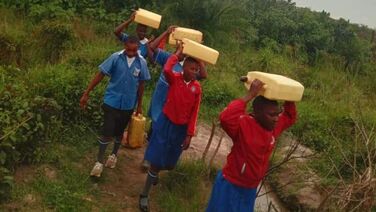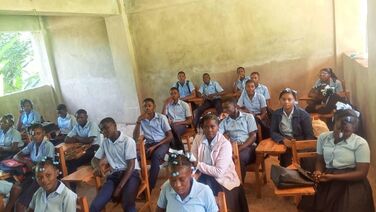
Featured blog post

Richmond Sailfish - Walk a Mile in their Shoes
We are a year-round swim team in the San Francisco Bay Area. Our swimmers participate in local and international fundraisers to learn the importance of giving back. Our world is better when we think about and help others through small acts of giving and volunteering. Help us make a difference by doing a small act of giving and volunteering today.
Our team is off to a good start on our fundraiser for Sir Nimrod Infant & Junior School in Uganda. I have included photos of our “Walk a mile in their shoes workout”. Our swimmers walked a 1-mile round trip to a local watering spot in Richmond, CA, to fill up 1+ gallon bottles of water. They then carried them back to our pool to experience first-hand what it is like to have to do this every day just to go to school. It was a life-changing experience for our swimmers and parents, and I hope that we can continue to change hearts and minds about this important issue.
We will do a second “Walk a mile in their shoes workout” in two weeks to keep our momentum going.
SUPPORT THE SAILFISH CAMPAIGN HERE
– submitted by the Richmond Sailfish Swim Team in California

Fundraising Ideas

Explore Our Lesson Plans
All of our lesson plans are free.
Projects in Need

Kirungu Primary School
Kirungu Primary School is in Nakijju Village in the rural district of Gomba, Uganda.

Saviefe Deme Community School
Saviefe Deme is a rural community located in the Volta region of Ghana and has a population of approximately 3,100 people. The major economic activity in the community is subsistent farming, trading, and hunting. The people are very friendly and accommodating. Saviefe Deme Community School was established in 1964 by the Government of Ghana in partnership with the community. The school has not received any major development from the government since its establishment, so the community members always come together to support the school through communal labor with the support of other organizations. Being the only school in the area, the school currently has 150 students ranging from kindergarten to grade 9.

Lycee nationale de carice
Established on November 4, 2002, “Lycée National Philippe Barthélemy de Carice” commonly known as “Lycée National de Carice” has been a cornerstone of education in the commune of Carice for grades 9-12. Despite years of dedication and perseverance, the school continues to face major structural and infrastructural challenges, limiting its ability to provide a fully supportive environment for its students.



